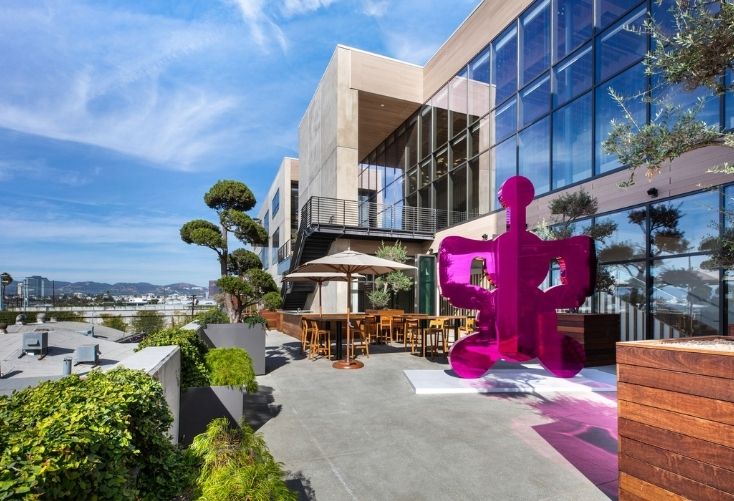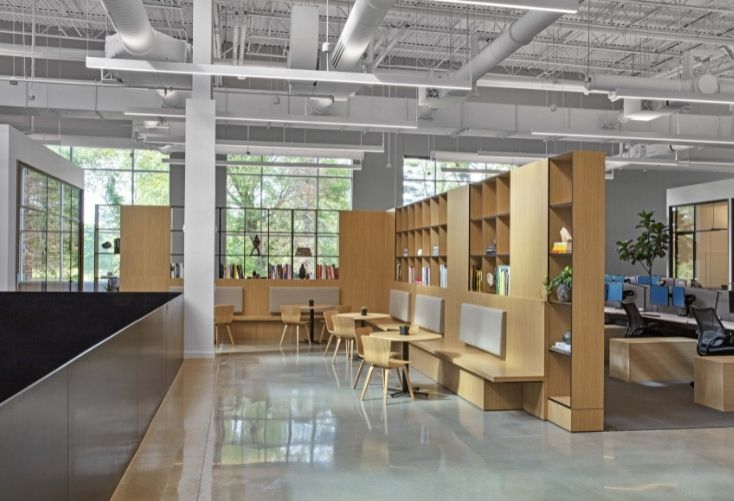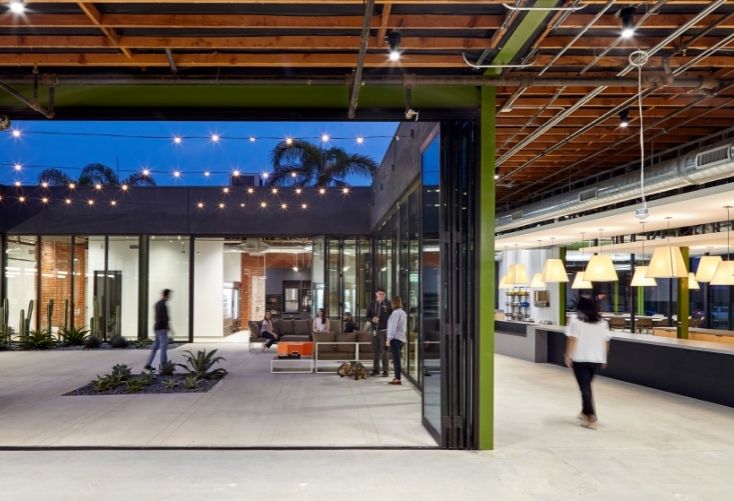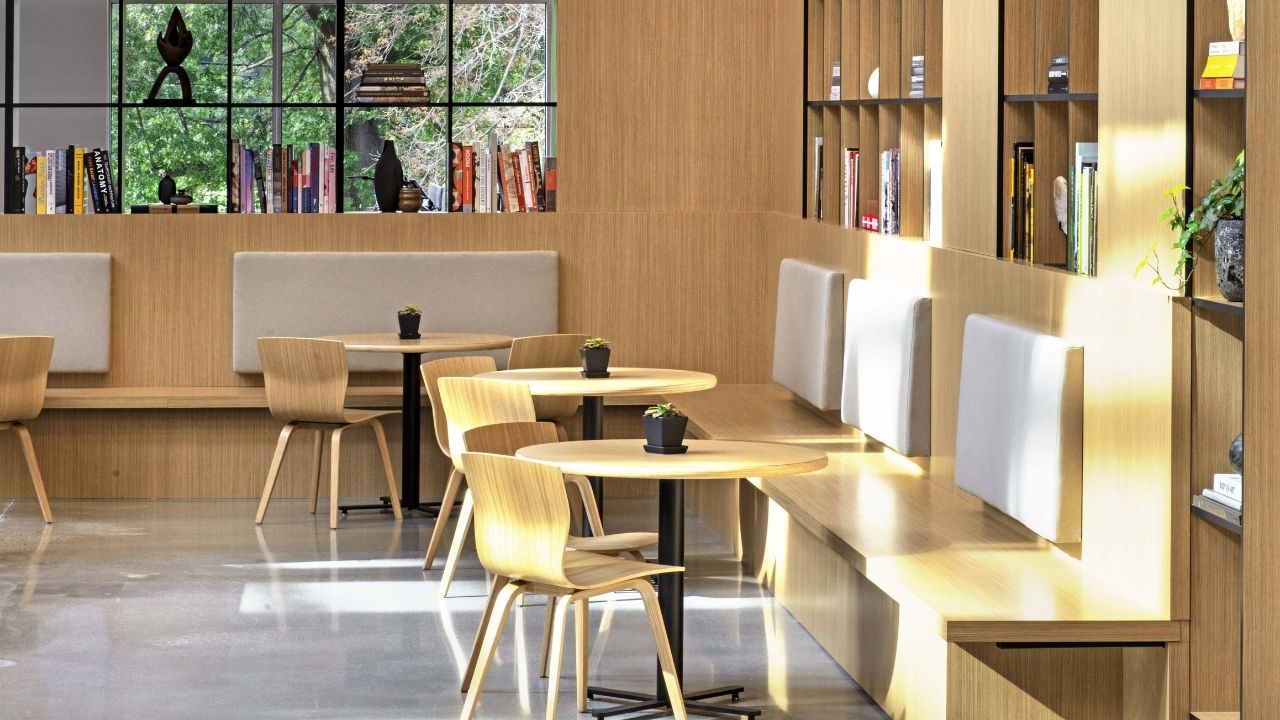- Business leaders are once again delaying their return-to-office date, with some pushing back to 2022.
- Design plays a key part in creating a safer workplace, and using a third party process can help alleviate concerns over workplace wellness.
- Allwork.Space spoke with Jonce Walker, HLW’s Director of Sustainability and Wellness, about how companies can upgrade the workplace so that employees are more comfortable returning to it.
For over a year, companies have been planning and strategizing their return to the office. Many are still figuring out how and when the return will actually take place, let alone what it will look like for employees.
As companies, once again, push the date of the return to the office date for early 2022, leaders have a new opportunity to figure out how to motivate and encourage employees to want to go back to the workplace.
It’s not an easy task, as surveys have found that many employees would rather keep working from the comfort of their own homes.
Allwork.Space spoke with Jonce Walker, HLW’s Director of Sustainability and Wellness, about how companies can create or upgrade the workplace so that employees are more comfortable returning to it.
Allwork.Space: What are some of the key concerns employees currently have? How can design address these concerns?
Jonce Walker: What we have been doing at HLW internally is going through a third-party process called WELL Health and Safety, which was created by the WELL Building Institute in response to COVID-19.
What the program lays out is several strategies that companies can implement in their workspace to ensure a safe return to work. Some of the strategies include creating a business continuity plan, ensuring that offices are cleaned every day and done so in a thorough way, and ensuring the workplace/building has top quality air filtration systems in place.

This approach can help ease some key employee concerns because it is a suite of safety protocols that are being reviewed by a third party.
Just like LEED or WELL, we have implemented all of these strategies so that there is this third-party stand that says that we have gone above and beyond and done these safety measures to ensure that the office is safe to return to.
What we are seeing is that there is a renewed comfort in staff now that most staff are vaccinated. Despite this, we have implemented strategies to reduce touchpoints and limit interactions with building staff—for example, no talking to reception staff, limited capacity in elevators, etc.

Design wise, we adjusted our layout to maintain 3 feet distancing in the office. We are doing this through a booking desk system that allows employees to see who will be in the office and where they will be seated.
While this is nothing new, these types of systems existed before the pandemic, they have now been institutionalized via policies and protocols.
There is also something to be said about materials used.
You can have the best filtration or air quality system in the world, but if you are filling your building with harmful toxins and vinyl, that’s not going to help as you are basically introducing harmful things in the air.
At HLW, we have an in-house team that specifies healthy and safe materials that we can use in our workplaces: paint coatings, furniture, adhesive, and cleaning products.
Allwork.Space: Do you believe technology will play a key role in creating a safer return to the office?
Yes and no.
Good filtration is important, so is a sophisticated building management system. Technology will be key in the sense that sophisticated management systems are an important thing to integrate in the post-COVID workplace.
That being said, I don’t see a massive solution through tech happening.
I do see technology being key to creating more sustainable workplaces, which I believe is key to getting workers back in the office.
There is a nexus between wellness, carbon, and energy. When people were told to go home, buildings didn’t change how they functioned; even if there was only one person in the building, the building continued to operate at full capacity.

Buildings need to be smarter about how they deliver and filter fresh air. Technology can help with that, as it can help monitor capacity and occupancy and recommend how to run these systems based on that.
Air quality has become a key concern for everyone in light of COVID-19.
Allwork.Space: Can you elaborate on the importance of air quality and why now it’s a key concern?
People are now more aware of how filtration systems can help spread or prevent the spread of communicable diseases. Optimizing ventilation systems based on building capacity and usage can help ensure air quality is maintained.
Before COVID-19 happened, if you asked people about their air in their space, they didn’t know anything about it. Now they do.
The focus on air quality has been ramped up—air quality has been promoted since the 90s, but people are now really focused on it, and this is a good thing.
Air quality can help people focus, help people not get drowsy, and help reduce CO2 levels.
That being said, you have to be careful not just to jam a filter and call it a day; you have to be really smart about how systems are designed and how they talk to each other—which is why technology is important.
Allwork.Space: Why do you believe that sustainability will play a key role in getting people back in the office?
What we did at HLW and with our clients while everyone was away was to take advantage of that time to create better spaces for employees.
For example, our HQ in New York got LEED Gold certified and we are also currently pursuing the Just certification, which helps companies optimize policies that improve social equity, as well as DE&I efforts.
This is important because when people return to the office, there will be something they can be proud of.
Allwork.Space: What’s next for workplace design in a post-COVID world?
What I have been coming back to is that people are not used to the commute anymore, so the workplace will need to provide a sense of relief and comfort from the commute in order for people to go back to the workplace.
I think the way to do that is through biophilic design, incorporating nature and natural systems into the workplace. This is the future.

Biophilic design is scalable, it’s just being smart about materials you select and views to the outside.
Offices that have roof terraces are going to be the best because you can be outside but still connected with the workplace. We are seeing this with a lot of clients who are now “amenitizing” roof spaces that were not accessible before.



 Dr. Gleb Tsipursky – The Office Whisperer
Dr. Gleb Tsipursky – The Office Whisperer Nirit Cohen – WorkFutures
Nirit Cohen – WorkFutures Angela Howard – Culture Expert
Angela Howard – Culture Expert Drew Jones – Design & Innovation
Drew Jones – Design & Innovation Jonathan Price – CRE & Flex Expert
Jonathan Price – CRE & Flex Expert














